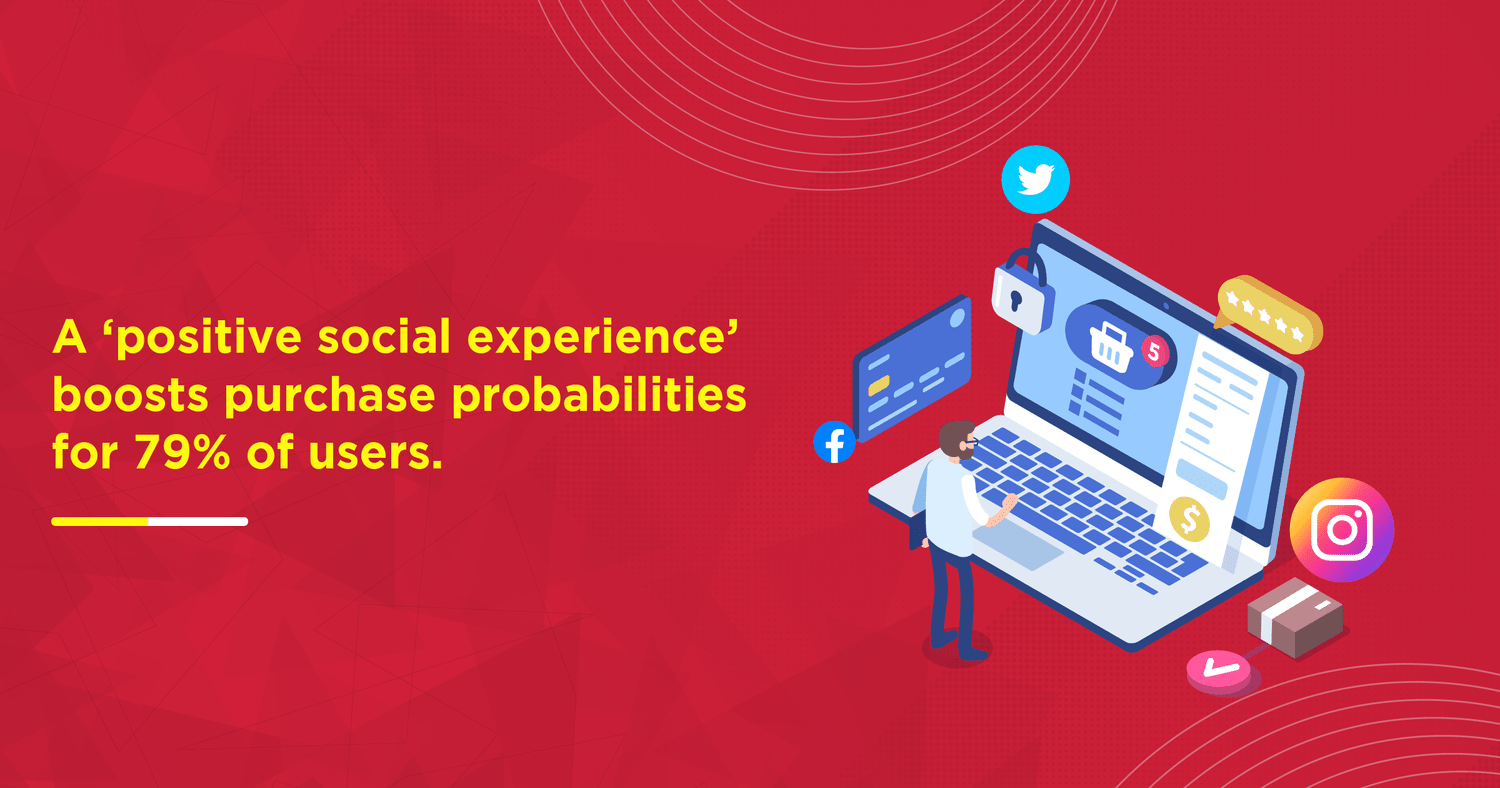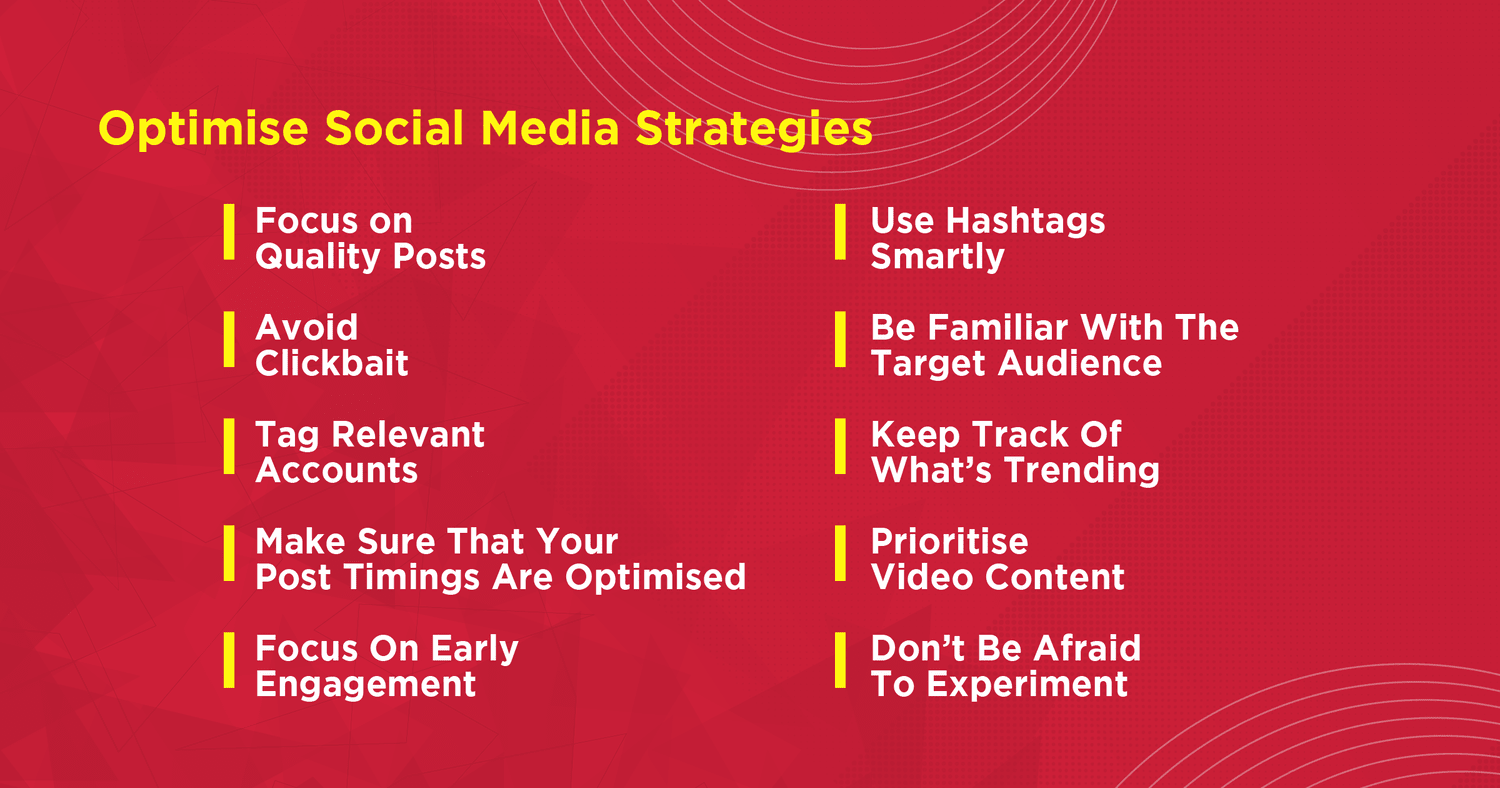Social Media Algorithms – How They Work & Tips to Optimise

Social media has become a ubiquitous element in the present-day world. Every second, close to 55K posts are published on Facebook, ~5800 tweets are published, and more than 700 Instagram posts are made. The ‘social world‘ is a crowded one, and in order to ensure high engagement levels, the massive volume of diverse content has to be sorted properly – so that people come across posts & updates that they are interested in, and are likely to interact with. This is where the importance of understanding social media algorithms comes into the picture. Any leading social media agency would devise their promotional strategies on the basis of these algorithms – so that their clients get the maximum visibility in the social space.
For brands, social media channels (LI, IG, FB & more) present unlimited opportunities to reach out to, and connect with, a large pool of ‘always-on’ customers. However, simply posting updates mechanically – with hardly anyone viewing them – does not cut the ice. The key lies in following the latest social media algorithms, and tweaking strategies accordingly, to get the maximum brand-building juice out of social channels.
What Exactly Are Social Media Algorithms?
Tastes, interests and viewing preferences vary across individuals. In the overflowing content pool in social media, there has to be certain rules and systems that ‘decide’ what should be shown to any particular user. Social media algorithms comprise precisely these rules. The algorithms are framed to analyse the viewing patterns of users, and sort content accordingly. This, in turn, ensures that people regularly encounter posts that they are interested in, and have the highest chance of interacting/engaging with.

Analyze Social Media Algorithm with the Viewing Pattern and Content
Put in another way, social media algorithms serve as ranking signals to determine the unique search results and ads on the different social channels. Hence, the news feed differs across users. In a nutshell, these algorithms bring order to the overall ‘social media landscape’.
Time Of Publishing Vs Content Relevancy
Before social media algorithms came into being, user feeds were displayed as per the publishing time of posts. In most instances, a ‘reverse chronological order’ was followed. As a result, the latest posts from any account were displayed first. However, in this system, users often came across updates that were not particularly relevant or interesting for them.
As experts from any top social media agency in Kolkata would confirm, content relevancy rules the roost in the present-day online marketing domain. For this, the social media algorithms are created & updated – to sort all posts in terms of their relevance to the concerned viewer or user. The algorithms make sure that content delivery is always in sync with user-behaviour.
How Do Social Media Algorithms Work?
Broadly speaking, the social media space has two main things – the ‘pool of content’ and the ‘pool of users’. Social media algorithms, which are powered by machine learning (ML), have the capacity to estimate the value of each social media post for a particular user. Individual feeds are formed accordingly.

Understand the Mechanism of Social Media Algorithms
All social media websites do not have the same set of algorithms. However, all social media algorithms work as per a designated set of factors (also known as signals). We will here quickly take a look at the key factors that govern the algorithms of leading social media platforms:
For LinkedIn → The quality of posts published on LinkedIn serves as the most important ranking signal, along with early engagement (this determines how much further a piece of content is pushed out). The LI connection network, with similar interests, also is a key factor.
For Facebook → The total engagement level of a post (e.g., likes, shares and comments) – particularly from contacts – is treated as a vital ranking signal by the FB algorithm. The type of content makes a difference too (read: videos), along with the content quality parameters. Content that is assessed as authentic, meaningful and accurate, gets the maximum visibility.
For Instagram → Topic trends, content timelines and early popularity/engagement are the key pillars that prop up the algorithms on Instagram. The interests of individual users also influence the type of posts they get to see on their feed.
For YouTube → The popularity of any video – typically measured in terms of likes, watch times, clickthrough rates and other key metrics – is one of the most vital YT ranking signals. In addition, videos that are ‘contextually relevant’ often make their way into the ‘Suggested Videos’ section. The watch history of users makes a difference too.
For Twitter, Pinterest and Tiktok → The publish time of a tweet has an impact on determining whether it is displayed under trending topics. Location is also an important factor, as is the level of user interactions and overall ‘popularity’ of the tweet in particular, and the topic in general.
Much like other social channels, Pinterest algorithms also treat engagement as a key ranking signal (for both standalone Pins and the entire account). Website quality is also assessed on the basis of the popularity of the Pins that are linked to that portal.
The biggest point of departure of Tiktok from the other social platforms is that, follower count does not matter on the former. Instead, the focus is more on following trends, considering previous engagements/interactions, and overall user-behaviour in the ‘Discover’ tab section.
The Need For Social Media Algorithms
A recent YouTube survey revealed that nearly 65% of people come across videos that contain misleading (or at least, inaccurate) information. There is a definite gap in ‘user intent’ and ‘content delivery’ – and that’s precisely what social media algorithms look to plug. Professionals from a leading digital marketing agency in Kolkata reiterate the importance of algorithms to pull down low-quality or low-on-relevance content – so that useful brand content does not get buried in the crowd. Put simply, these social algorithms are required to prioritise content on social media – so that the RIGHT content is displayed to the RIGHT people.
An Ever-Evolving Domain
While social media algorithms have the final say on the ‘reach’ of any post, these algorithms are not perfect by any stretch of the imagination. Videos can become viral without any apparent reason, while certain content may remain ‘hidden’. What’s more – these algorithms are frequently updated, to deliver the best possible user experience. The ball is in the court of online marketers, to stay abreast with the evolving algorithms, and upgrade their strategies.
Why Are Effective Social Media Strategies Required?

A Positive Social Media Experience Boosts Purchase Possibilities
Radio spot ads and television advertisements are no longer the go-to channels for people to learn about new brands. Social media platforms have come up as the top ‘brand/product discovery tool’ – with close to 6 out of every 10 online buyers finding out about new brands through social media. In addition, social media also helps individuals to seamlessly connect with brands & service providers (~71% consumers agree on this). A ‘positive social experience’ boosts purchase probabilities for 79% of users. These stats clearly underline the importance of ensuring that social media strategies are framed and updated in accordance with the concerned algorithms.
Tips To Optimise Social Media Strategies In Sync With Algorithms

Optimize Social Media Strategies
Focus on Quality Posts: Social media agency experts keep emphasising on the fact that social media content needs to be of the highest possible quality. Marketers need to double-check that all content shared socially is helpful, relevant, accurate and interesting.
Use Hashtags Smartly: Hashtags, along with post headlines and captions, need to be crisp and accurate – to ensure proper visibility. Using too many hashtags, however, can seem spammy.
Avoid Clickbait At All Times: If the headline of your social media claims something and the communication is about something else, that is tantamount to clickbait. Social media algorithms have the ‘intelligence’ to penalise such spam content. Never share content that can be deemed as misleading.
Be Familiar With The Target Audience: While the profile of your target audience is likely to be similar across platforms, user-behaviour would certainly be different. It is important to ensure that the content strategy matches the browsing preferences of users on a particular platform.
Tag Relevant Accounts In Social Media Posts: In case other brands or companies are being mentioned in a post, it is always a good idea to tag their social media accounts. Such tagging opens up opportunities for these other accounts to engage with the post. However, make sure that the post does not seem to be just an engagement-bait.
Keep Track Of What’s Trending: Posting on trending topics is always a great option for capturing the attention of users while they are scrolling through their feed. For IG Reels or Tiktok, using trending audio and/or effects is also recommended. However, trends should be chosen selectively – so that there is a connection with the underlying brand.
Make Sure That Your Post Timings Are Optimised: With early engagement being a key indicator for most social media algorithms, it is an absolute must for marketers to understand WHEN their target audience is online and likely to engage with new posts. While there are generic recommendations regarding this, remember that there is no ‘one-size-fits-all’ solution – and optimal post timings need to be found out.
Prioritise Video Content; Work On Publishing Frequency: The popularity of native video content on social media is surging. Instead of just sharing external video links, marketers should work on creating standalone videos for social distribution.
In general, consistency is vital for social media marketing success. A proper content calendar should be followed, so that the ideal publishing frequency is maintained.
Focus On Early Engagement: Ask questions, nudge viewers for comments, encourage post shares – in essence, do everything to drive up the early engagement of all the posts you publish on social media. The best content pieces encourage people to interact with them (and also with other users).
Don’t Be Afraid To Experiment: Social media is a dynamic space. Strategies need to evolve constantly – and there is an evident need to play around with different types of content buckets and posting strategies. Perform A/B tests to find out which content/content distribution strategy works best. Revisit your overall social media strategies at regular intervals.
Social media algorithms typically serve as ranking signals that determine which content will be displayed when and to whom, and what its engagement levels are likely to be. Given that these algorithms are frequently updated, brands should ideally avail the services of any good digital marketing agency in Kolkata, to make sure that their social media marketing (SMM) strategies are always on track – and tweaks, as and when required, are made on time. By understanding how social media algorithms work and how things need to be optimised, companies (B2B or B2C) can make their content distribution strategies on social media more efficient.
Different people come across different, unique social media feeds – based on their interests and browsing behaviour. If your social strategies are not in sync with the latest algorithms, there’s every chance that your potential customers are missing out on the updates you are sharing!





